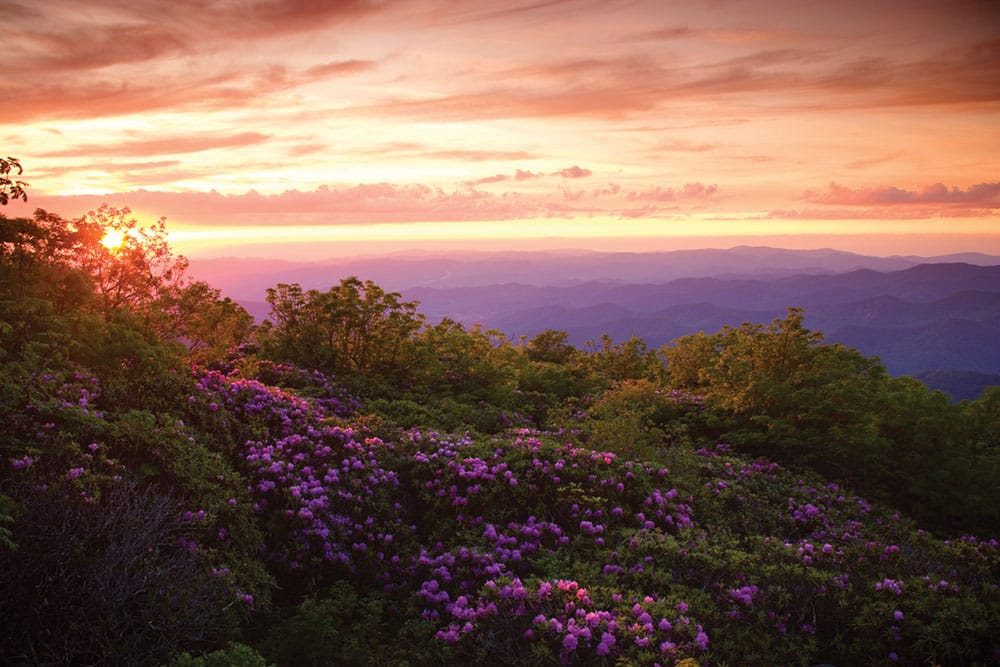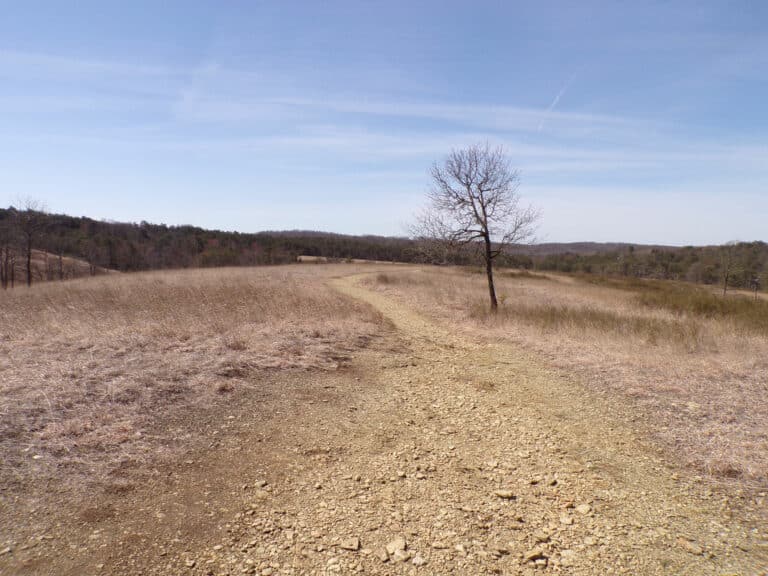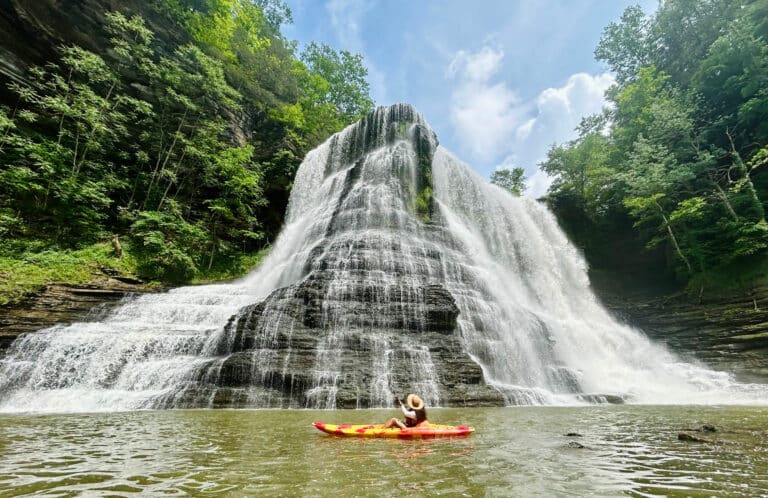Unlikely groups have come together to propose a new National Scenic Area
Hunters and hippies are a lot alike. I’ve spent over two decades living alongside both of them in a rural corner of Appalachia that’s home to militias and communes. Outwardly, they may fly different flags, but when you get to know them and what they value most, their Venn diagrams almost completely overlap.
Hippies teach permaculture and primitive skills. Hunters call themselves preppers, but let’s face it: they’re basically doing the same things—canning a lot of homegrown vegetables and stocking the chest freezer with venison.
Hunters and hippies both love wildlife. And they are both happiest in the forest. One may be wearing camo and the other tie-dye, but they are both deeply connected to the wild woods.
That may be the secret to a rare conservation success story unfolding in southern Appalachia, where hunters and hippies are working together to create North Carolina’s first-ever National Scenic Area.
WTF? In other parts of the country, these groups are raging at each other. What has brought crusty old-timers and New Age millennials together? A big, beautiful forest.
The Craggy section of Pisgah National Forest includes 16,000 acres of world-class trails, waterfalls, ancient forests, and trout streams. And folks of different backgrounds and beliefs have forged an unusual and unlikely partnership to permanently protect it.
“There’s a lot more we have in common than you might think,” says Alan Smith, a 73-year-old who has been hunting in Craggy’s forest for decades.
“People love the forest for a lot of different reasons, but we all share a deep connection with the woods. If you start there, good things can happen.”
Eight years ago, Alan sat around a wobbly table at the community center with a dozen other farmers, teachers, and carpenters from the Craggy community. Born-again Bible thumpers and witchy wildcrafters had come together to talk about the logging that threatened their Craggy forest. They began spitballing ideas about how to save it, and someone suggested proposing it for National Scenic Area designation. After all, its panoramic vistas from Craggy Gardens were some of the most popular and photographed spots in the country.
So they hatched a plan that included door-to-door conversations, flyers at the local gas station, and a community meeting with the U.S. Forest Service.
“We didn’t know what the hell we were doing,” said Steven McBride, one of the neighbors around the table at that first meeting. “But we had to try. We just decided to go for it and got to work.”
The Craggy National Scenic Area proposal quickly gained momentum: over 10,000 supporters submitted comments to the U.S. Forest Service. The proposal also received unanimous bipartisan resolutions of support from county commissioners and Asheville City Council after hundreds turned out at their meetings.
The Craggy National Scenic Area also got the attention of another unusual and unlikely coalition: the Nantahala-Pisgah Forest Partnership. Since 2014, this coalition of 30 diverse organizations has been working together to find common ground on the Pisgah-Nantahala National Forest. The Partnership includes the logging industry, leading conservation groups, national hunting organizations, and an array of recreation organizations.
They are perhaps unlikely allies—tree-huggers and timber industry executives, hunters and hikers. For years, they have been trying to hammer out a blueprint for the future of the Pisgah-Nantahala National Forest.
And last year, they forged a stunning, precedent-setting agreement, signed by all 30 organizations. At the top of their list of recommendations: create the Craggy National Scenic Area.
What’s so special about Craggy? It has something for everyone. Blockbuster movies like “The Hunger Games” have been filmed in Craggy: Katniss kissed Peeta for the first time just below one of the most popular bouldering spots in Craggy.
“The Last of the Mohicans” was also filmed in Craggy—there is even a trail named after the opening scene of the movie, where the Mohicans hunt an elk through the forest.
Today, Craggy is a popular bear hunting destination and a fly fishing oasis. It also boasts some of the steepest downhill mountain biking and best trail running in the East. Native brook trout shelter in cold headwater streams. Swimming holes abound—and so do morels and ramps.
The 1,000-mile Mountains to Sea Trail—North Carolina’s state trail, stretching from the Smokies to the Outer Banks—rolls along Craggy’s ridgeline. And the area has mile-high, 360-degree views from Craggy Gardens and Craggy Pinnacle along the Blue Ridge Parkway.
Craggy is a temperate rainforest, and its cold, clear creeks supply drinking water to two rapidly growing municipalities. That water is also important to area farmers, including Anna Littman, a North Carolina native who owns Ivy Creek Family Farm just a stone’s throw from the Craggy section of Pisgah National Forest. She is a full-time farmer who grows fruits and vegetables and sells at local markets to support her family. All of her crops depend on the clean, clear headwaters of Craggy.
“We don’t want our creek running brown or drying up. We depend on that forest,” says Littman. “We need to keep that forest just the way it is.”
Ivy Creek Family Farm is one of over 150 area businesses that have endorsed the Craggy National Scenic Area.
As a result of this groundswell of support, the U.S. Forest Service has recognized part of Craggy as a special area worthy of long-term protection in its forest plans. However, the Forest Service excluded 5,000 acres—around one-third of the total area—and placed it in its highest priority logging designation. The Forest Service plans to log over 1,500 acres of old-growth forest, the headwaters of the Ivy River (the drinking water source for the towns of Weaverville and Mars Hill), and the Snowball Trail, one of the most popular trails along the Blue Ridge Parkway.
The Craggy National Scenic Area needs the Forest Service to protect all of Craggy. And it needs North Carolina’s senators to formally introduce a bill. Senator Tillis is an avid mountain biker; Senator Burr is retiring this year and looking for a legacy.
Across three presidential administrations, unlikely allies have worked together to build unanimous bipartisan support for the Craggy National Scenic Area.
This is a rare opportunity to show that communities matter, public lands can unite us, and democracy still works.
Learn more about the proposed Craggy National Scenic Area at iheartcraggy.org.
Cover photo by Steven McBride








